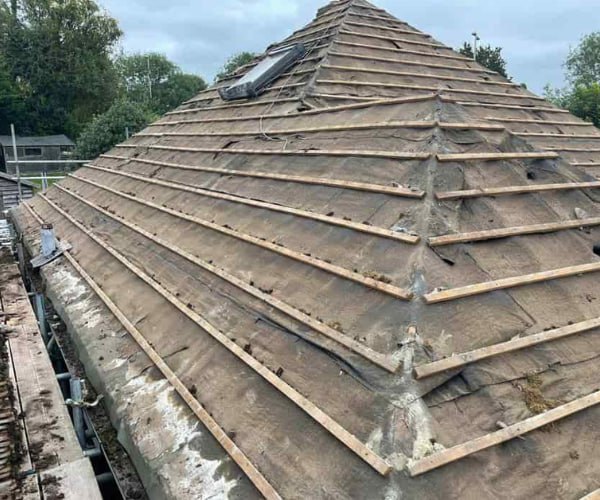Safety First: Tips for Handling Hazardous Materials During Hipped Roof Re-Roofing
Introduction: Undertaking a hipped roof re-roofing project is a significant investment in your home’s structural integrity and aesthetic appeal. However, it’s essential to recognise that this process may involve handling hazardous materials that can pose risks to your health and the environment if not managed properly. At GKL Roofing Tickhill, safety is our top priority, and we’re committed to ensuring that every re-roofing project is conducted with the utmost care and attention to safety protocols. In this blog post, we’ll share some essential tips for handling hazardous materials safely during hipped roof re-roofing to protect yourself, your loved ones, and the environment.
1. Identify Hazardous Materials
Before starting any re-roofing project, it’s crucial to identify and understand the hazardous materials that may be present in your existing roof. Common hazardous materials found in roofing materials include asbestos, lead-based paint, and treated wood containing arsenic or other chemicals. Conduct a thorough inspection of your roof and consult a qualified roofing professional to determine if hazardous materials are present and how they should be safely managed and removed.
2. Hire Certified Professionals
When dealing with hazardous materials during hipped roof re-roofing, hiring certified professionals with the expertise and training to handle these materials safely is essential. Look for roofing contractors who are certified and licensed to work with hazardous materials and who follow industry best practices and safety standards. Certified professionals have the knowledge, skills, and equipment necessary to safely remove and dispose of hazardous materials without putting themselves or others at risk.
3. Use Personal Protective Equipment (PPE)
Personal protective equipment (PPE) protects workers from exposure to hazardous materials during hipped roof re-roofing. Ensure that all workers involved in the project wear appropriate PPE, such as respirators, gloves, goggles, and protective clothing, to minimise the risk of inhalation, skin contact, and eye exposure to hazardous materials. Properly fitting and well-maintained PPE ensures worker safety and prevents exposure-related health issues.
4. Follow Safe Removal Procedures
When removing hazardous materials from your hipped roof, it’s essential to follow safe removal procedures to minimise the release of harmful substances into the environment. Use wet methods, such as wetting down surfaces with water, to control dust and prevent airborne particles from spreading. Avoid using power tools that generate dust and debris, as they can increase the risk of exposure to hazardous materials. Dispose of hazardous materials according to local regulations and guidelines to prevent environmental contamination.
5. Monitor Air Quality
During hipped roof re-roofing projects involving hazardous materials, monitoring air quality is essential to ensure that airborne contaminants are kept within safe levels. Air monitoring equipment, such as air sampling pumps and real-time air quality monitors, measure levels of hazardous substances in the air and verify that control measures effectively reduce exposure risks. Regular air monitoring helps protect workers and residents from the harmful effects of airborne contaminants and ensures compliance with safety regulations.
Conclusion: Handling hazardous materials safely during hipped roof re-roofing is essential for protecting the health and safety of workers, residents, and the environment. By identifying hazardous materials, hiring certified professionals, using appropriate PPE, following safe removal procedures, and monitoring air quality, homeowners can minimise the risks of hazardous materials and ensure that their re-roofing project is conducted safely and responsibly.
Call us on: 01302 490 497
Click here to find out more about GKL Roofing Tickhill
Click here to complete our contact form and see how we can help with your roofing needs.

